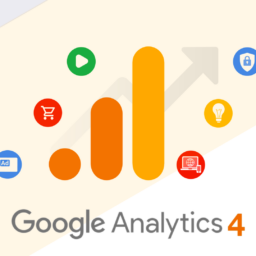
Steps to Creating a Fail-Proof Digital Marketing Plan
Digital marketing has become an essential component of modern marketing strategies. With the rise of social media and online platforms, businesses can reach more customers and generate more leads than ever before. However, building an effective digital marketing plan can be a daunting task. In this blog, we will discuss the steps to building a digital marketing plan that will help businesses achieve their marketing goals.
Step 1: Define Your Target Audience
The first step in building a digital marketing plan is to define your target audience. This involves identifying the demographic and psychographic characteristics of the people who are most likely to be interested in your products or services. This will help you create content and advertising that is tailored to your audience’s needs and preferences.
To define your target audience, you should conduct market research, analyze your existing customer data, and create buyer personas. Buyer personas are fictional representations of your ideal customers that are based on data and research. They include information such as age, gender, income, interests and pain points.
Step 2: Set Your Marketing Objectives
Once you have defined your target audience, you need to set your marketing objectives. These are the specific goals that you want to achieve with your digital marketing plan. Your objectives should be SMART: specific, measurable, achievable, relevant and time-bound.
Some common marketing objectives include:
- Increase website traffic
- Generate more leads
- Improve brand awareness
- Boost sales
- Increase customer retention
Your marketing objectives will inform your digital marketing strategies and tactics.
Step 3: Develop Your Digital Marketing Strategies
With your target audience and marketing objectives in mind, you can develop your digital marketing strategies. Your strategies should be designed to achieve your objectives and reach your target audience. Some common digital marketing strategies include:
- Content Marketing: Creating and publishing valuable content that is relevant to your target audience to attract and retain customers.
- Search Engine Optimization (SEO): Optimizing your website and content to rank higher on search engine results pages (SERPs) and drive more organic traffic to your website.
- Pay-Per-Click (PPC) Advertising: Paying for ads to be displayed on search engines or social media platforms and only paying when someone clicks on the ad.
- Social Media Marketing: Creating and sharing content on social media platforms to increase brand awareness and engage with your target audience.
- Email Marketing: Sending targeted and personalized emails to your subscribers to nurture leads and promote your products or services.
- Influencer Marketing: Collaborating with influencers in your industry to promote your brand and reach a wider audience.
Your digital marketing strategies should be aligned with your target audience, marketing objectives and available resources.
Step 4: Implement Your Digital Marketing Tactics
Once you have developed your digital marketing strategies, it’s time to implement your tactics. These are the specific actions you will take to achieve your marketing objectives. Some common digital marketing tactics include:
- Creating blog posts, ebooks, videos and other types of content to attract and retain customers.
- Conducting keyword research and optimizing your website and content to rank higher on SERPs.
- Creating and launching PPC campaigns on search engines or social media platforms.
- Creating and sharing content on social media platforms to increase brand awareness and engage with your target audience.
- Creating and sending targeted and personalized emails to your subscribers to promote your products or services.
- Collaborating with influencers in your industry to promote your brand and reach a wider audience.
Your tactics should be based on your digital marketing strategies and designed to achieve your marketing objectives.
Step 5: Monitor and Measure Your Results
The final step in building a digital marketing plan is to monitor and measure your results. This involves tracking your key performance indicators (KPIs) and analyzing your data to determine the effectiveness of your strategies and tactics. Some common KPIs include:
- Website Traffic: Tracking the number of visitors to your website and the sources of your traffic, such as organic search, social media or referral traffic.
- Conversion Rate: Tracking the percentage of visitors who take a desired action on your website, such as filling out a form or making a purchase.
- Cost Per Acquisition (CPA): Tracking the cost of acquiring a new customer through your digital marketing efforts.
- Return on Investment (ROI): Tracking the revenue generated from your digital marketing efforts compared to the cost of those efforts.
- Social Media Engagement: Tracking the number of likes, shares, comments and other types of engagement on your social media posts.
- Email Open and Click Rates: Tracking the percentage of subscribers who open your emails and click on links within your emails.
By monitoring and measuring your results, you can identify areas where your digital marketing plan is succeeding and areas where it needs improvement. This allows you to make data-driven decisions and adjust your strategies and tactics accordingly.
In addition to tracking your KPIs, it’s important to regularly review your digital marketing plan and make adjustments as needed. This includes keeping up-to-date with the latest digital marketing trends and technologies, as well as listening to feedback from your target audience and customers.
Building a digital marketing plan is essential for businesses that want to reach and engage with their target audience online. By following these five steps – defining your target audience, setting your marketing objectives, developing your digital marketing strategies, implementing your digital marketing tactics, and monitoring and measuring your results – you can create a plan that is tailored to your business’s unique needs and goals. Remember to regularly review and adjust your plan as needed to stay ahead of the competition and achieve your marketing objectives.











